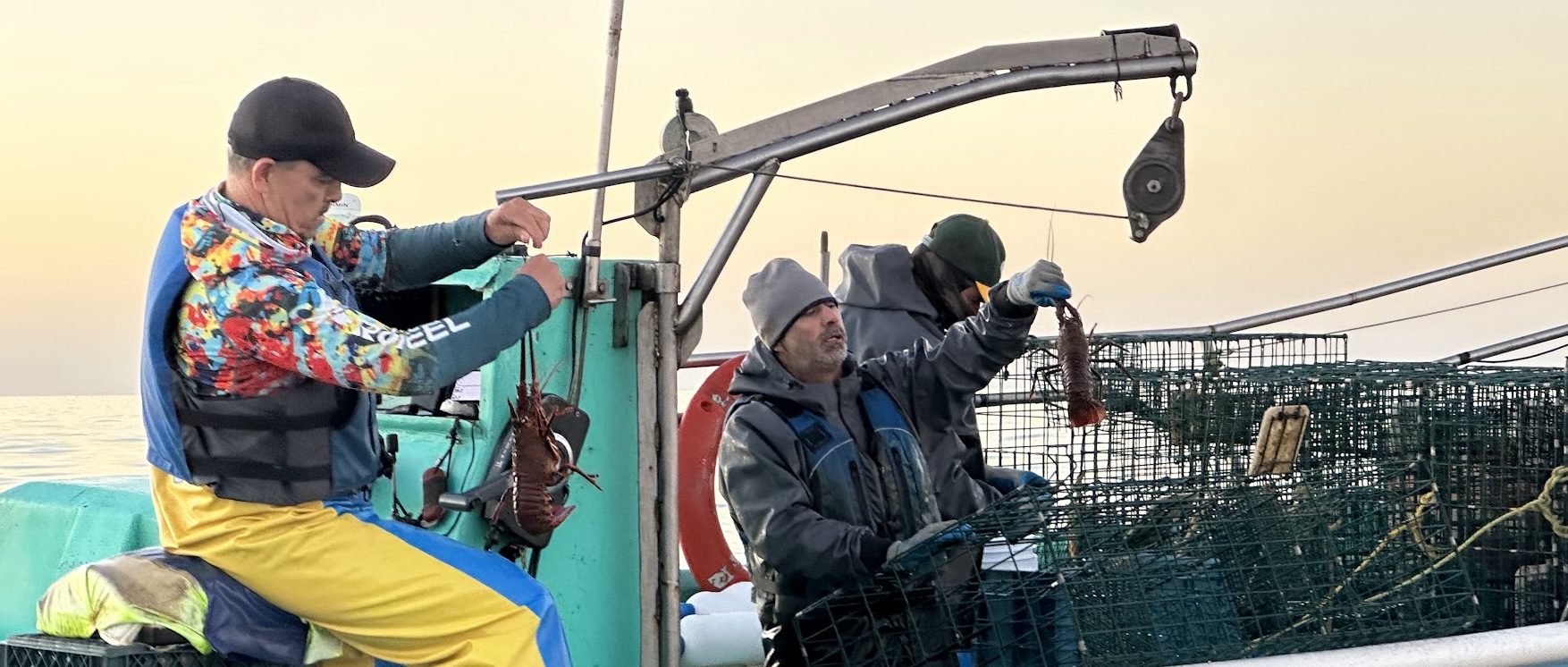Executive Summary
With the support of the Global Ghost Gear Initiative (GGGI), Pro Natura, Fedecoop, and the Ocean Conservancy, BUOY-FISH deployed 70 GPS-enabled intelligent fishing floats to fishermen in Punta Abreojos, Baja Sur, Mexico. This blog post outlines the key steps, findings, and next steps to ensure ongoing success.
Key Figures
- Three high-power outdoor LoRaWAN towers installed with 8dBi antennas.
- Three low-power indoor LoRaWAN gateways with 1.2dBi antennas.
- 10 Mappers installed on pangas to confirm wireless coverage.
- 160k payloads recorded as of December 6, 2024.
- 80 Connected Spindles assembled, programmed, onboarded, and delivered, with 70 remaining in the field
- 20 Satellite-Enabled Buoys deployed in the Lobster fishery.
- 514 S-Band Satellite Payloads received over the satellite uplink.
Project Execution Phases
The project was executed in three phases:
- Coverage Installation and Validation
- BUOY Delivery and Deployment
- Ongoing Support, Monitoring, and Reporting
Phase 1 | Coverage Installation and Mapping
The BUOY team, including Tal McGowan, Jameson Buffmire, and Andrew Buffmire, joined the Pro Natura and and Global Ghost Gear Initiative (GGGI) teams in traveling to Punta Abreojos, where we installed and validated a Low Power, Long Range, Wide Area Network (LoRaWAN). The goal was to establish coverage and confirm its usability by “mapping” the network in the open ocean where Fedecoop conducts fishing activity.
1a) Tower Installation
To provide coverage in the deployment area, BUOY initially deployed:
- A single 65’ 8dBi sectorized LoRa antenna.
- Two omnidirectional 8dBi fiberglass pole antennas.
- Kerlink iStation LoRaWAN gateways for robust outdoor coverage.
- Three raspberry pi based gateways for indoor coverage running a custom ROM with remote access.
After conducting mapping activities, BUOY replaced the 65’ sectorized antenna with an 8dBi omnidirectional antenna, unifying the configuration under the most performant design.
The BUOY team installed a total of six gateways across three locations. One at the Black Bass Lodge with the support of our AirBnB host, and two at Fedecoop owned locations. Why six? We put one indoor and one outdoor tower at each location, to maximize effectiveness of the provided coverage given the different propagation characteristics of indoor, smaller gain antennas, and larger, higher gain, outdoor antennas. The gateways resulted in significant and redundant coverage across the target deployment area.
1b) Mapping Devices
To validate coverage, BUOY used Adeunis Field Test Devices while in the field, and to continue the mapping activity remotely we installed coverage mapping devices on 10 Mexican Fishing Pangas.
1c) Coverage Results!
Upon arrival, no confirmed coverage existed for the Helium LoRaWAN IoT Network. Post-installation, the network was successfully validated and is now publicly accessible via:
- Helium Mappers (mappers.helium.com)
- BUOY-FISH App (app.buoy.fish)
Learnings & Opportunities
- Antenna height is the most critical factor in achieving the largest coverage radius.
- Omnidirectional antennas provided better range than directional antennas.
- Fishing activity is mostly nearshore, indicating LoRaWAN could be a viable networking tool to track commercial fishing activity in environments like Punta Abreojos.
Phase 2 | BUOY Delivery and Deployment
In collaboration with GGGI and Pro Natura, BUOY delivered 70 intelligent commercial fishing floats to Punta Abreojos fishermen.
Community Engagement
- A presentation was given to the fishing community, which was met with enthusiasm.
- Fishermen expressed their commitment to preventing gear loss and were eager to adopt BUOY’s solution.
- Local fishermen customized buoys with their colors, signaling adoption and integration into their workflow.
Status (December 6, 2024)
Working Product with Improved Interface
- Buoys and Panga Mappers are in daily use.
- Vessel trackers (“Mappers”) ping regularly when in transit and once per day when in storage.
- “Show All” feature now displays the last known location of all units.
Statistics
- 62 of 70 deployed units have reported in the last 24 hours.
- Live statistics available at: app.buoy.fish/stats
Satellite Payloads
BUOY partnered with Omnispace to enable direct-to-satellite communications for some of the deployed buoys.
Key Findings:
- 514 satellite transmissions recorded so far.
- Primary challenges:
- Potting compound interference affecting S-Band signal strength.
- Smaller antenna size limiting performance.
Satellite Data Summary
| Name | Count |
|---|---|
| Ranger (SP051333) | 376 |
| Seashell Filleting Starfish (0076) | 68 |
| Sail Tying Squid (0045) | 41 |
| Hatch Snapping Barnacle (0011) | 15 |
| Dock Reeling Orca (0010) | 14 |
| Total | 514 |
Key Learning: Potting compound can interfere with S-Band signal strength.
To track Omnispace S-Band satellites, visit: N2YO Satellite Tracker.
What’s Next?
BUOY is focused on improving:
1. Vessel Management
- User-controlled vessel configuration.
- Granular access control for data sharing.
2. Buoy Management
- Interactive satellite ping visualization in the BUOY app.
- Fine-tuning S-Band uplink intervals for more reliable transmissions.
3. Member Management
- Enhanced user permissions for improved security and access.
4. Close Collaboration
BUOY remains committed to close engagement with the Punta Abreojos community and will continue on-site visits and product iteration based on real-world usage.
Conclusion
This deployment validated BUOY’s technology and market fit. The project enabled:
- Real-time tracking of fishing gear to prevent loss and reduce ghost gear.
- Expansion of low-cost, low-power wireless solutions for sustainable fisheries.
- Strong local adoption, ensuring long-term success.
BUOY is excited to continue improving the technology and expand sustainable fishing practices globally. 🌊🐟
